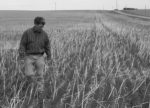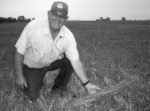What I've Learned from No-Tilling
Going 100% no-till in 1997 has placed Read Smith in position to help lead the effort to protect the fragile farmland of eastern Washington.
We're no doubt biased, but my family and I think there are few more breathtaking views of production agriculture than seen from the highest point of our farm in the Palouse region of eastern Washington. In midsummer, flowing fields of crops — which may include wheat, canola, barley, sunflowers, mustard, alfalfa, peas and lentils — stretch across the hills to the horizon.
Read More












